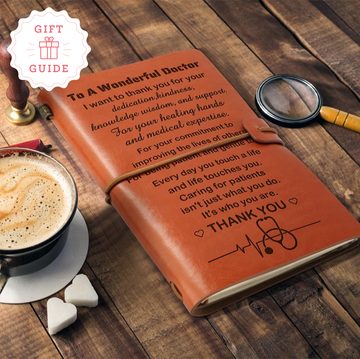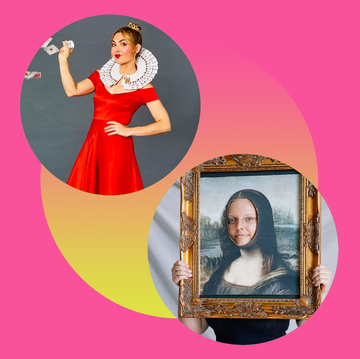Eid al-Adha, also known as the "Big Eid," is the most significant holiday on the Islamic calendar. When Eid al-Adha is observed changes, depending on the Gregorian calendar. But on the lunar Islamic calendar, it falls approximately 70 days after Eid al-Fitr, which follows Ramadan. In North America, you may hear more about Ramadan and Eid al-Fitr. However, Eid al-Adha holds a greater religious significance over Eid al-Fitr.
Eid al-Adha takes place to celebrate the completion of Hajj, the fifth and final pillar of Islam. Hajj is an annual pilgrimage to Mecca and its surrounding holy grounds, occurring in the final month of the lunar Islamic calendar. Practicing Muslims strive to complete all five pillars of Islam which are: bearing witness that there is only one God and that Muhammad is the messenger of God; establishing the salah prayer; giving the zakat charity; fasting during Ramadan; and completing the Hajj pilgrimage if one is physically and financially able.
In this article, we’ll break down everything from the importance of the holiday and how to celebrate Eid al-Adha, to when it is observed, along with how to wish family, friends and coworkers a very Happy Eid!
The Importance of Eid al-Adha
Eid al-Adha marks the completion of Hajj. Hajj is the 5th and final pillar of Islam. It takes place in Makkah and its surrounding areas in the last month in the Islamic calendar. It is a series of rituals taught to Muslims by Prophet Muhammad. The rituals are symbols. They are often symbols of the story of Prophet Abraham and his family.
For example, the Quran states: “Indeed, ˹the hills of˺ Ṣafa and Marwah are among the symbols of God. So whoever makes the Hajj or Umrah pilgrimage to the ˹Sacred˺ House, let them walk between ˹the two hills˺. And whoever does good willingly, God is truly Appreciative, All-Knowing.”
This ritual of walking between the hills of Safa and Marwa is to emulate Hagar. Muslims believe that Abraham was commanded to leave Hagar with their son, Ismail, alone in the valley of Makkah to avoid Sarah’s jealousy. Hagar was very apprehensive about being left here alone with a baby because no one lived here, and it was a remote and barren valley. However, when she realized God had commanded it, she put her trust in God and knew that God would not abandon her.
She had only one skin of water, which ran out. When it ran out, she put Ismail on the ground and began walking between the hills of Safa and Marwah in search of some source of water. For a portion of it, she would run between the hills so that Ismail would not be out of site. She repeated this movement seven times, placing her trust in God when suddenly Angel Gabriel appeared. He tapped the earth with his foot, and a spring erupted for Hajar and Ismail. This water is called Zam Zam water, and pilgrims today still drink from this spring.
Likewise, the other rituals of Hajj are also symbols. Muslims believe that by completing the Hajj with sincerity removes sins and gives a person a fresh start. Practicing Muslims strive to complete Hajj at least once in their life, saving up for this journey of a lifetime.
How is Eid al-Adha Celebrated?
One of the main ways that Eid al-Adha is celebrated is through the symbolism of sacrificing a livestock animal. These include animals such as a sheep, goat, buffalo, cow, camel or the sorts. Different geographic areas have their own preferences for the meat they like to consume on Eid al-Adha. In North America, beef or lamb is often the red meat of choice for Eid al-Adha. The animal chosen for the sacrifice is also determined by market prices, some animals are cheaper than others. So it really depends on what the person can afford. And not everyone is expected to offer sacrifice. Only those who have the wealth offer it.
The meat of the sacrificial animal is divided into three parts: one third for your house, one third to give as a gift to family and friends and one third for the poor.
For many people living in poverty around the world, Eid al-Adha is often the only time of year they get to enjoy red meat and this source of protein.
The symbolism behind the act of sacrifice ties back to Prophet Abraham. One of his signs of prophethood was that he would see true dreams. He saw in his dream he was sacrificing his son, Ismail. He and his son submitted to God’s Will, however, God spared them and replaced Ismail with a ram instead. In this way, we are taught a lesson on trusting God.
Culturally in North America, for those who can afford sacrifice, Eid al-Adha is typically marked by hosting a BBQ feast at home. Sometimes, North American Muslims might pay to have an animal sacrificed in a country facing famine. Then, they might order catering from a local restaurant offering an Eid al-Adha menu for their family and friends.
Popular foods enjoyed on Eid al-Adha include rack of lamb, kebabs, brisket, steak and more.
When is Eid al Adha?
The first day of Eid al-Adha always takes place on the 10th of Dhul Hijjah, which is the name of the 12th Islamic month. The 11th, 12th and 13th of Dhul Hijjah are also considered part of the holiday. On the Gregorian calendar, Eid al-Adha will take place beginning June 17th in 2024.
Eid Al-Adha Wishes and Greetings:
- Eid Moo-barak!
- Wishing you a woolly happy Eid!
- Wishing you an Eid that’s one to ram-ember!
- Happy Eid to the cutest little lamb!
- Wishing you an udderly wonderful Eid al-Adha!
- Eid al Adha is a time to beef up our blessings! Eid Mubarak!
- Wishing ewe a blessed Eid al-Adha!
- Eid al-Adha is the perfect time to say, I love ewe.
- May your Eid al-Adha be full of herd-earned happiness!
- Grazing through a workday is easier with a colleague like you. Happy Eid al-Adha!














